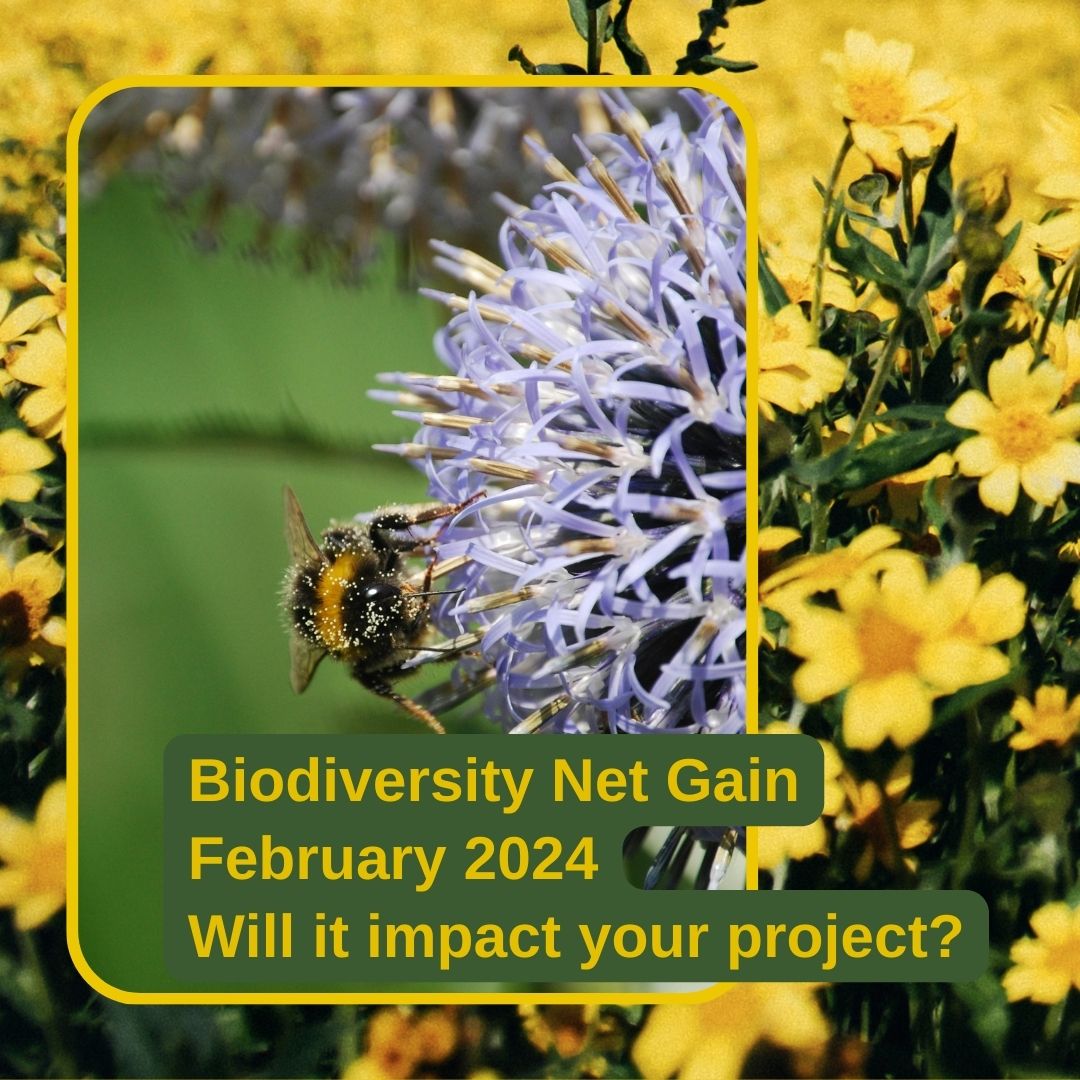Going Green from February 2024

Biodiversity Net Gain (BNG) is now a requirement for major development projects and becomes mandatory for minor sites on 2nd April 2024.
But what does BNG mean?
Plant and animal life in the site and surroundings of the project must be at least 10% greater at the end of the project than they were before it started.
So, what do we have to do?
Step 1. Baseline: Assess the existing diversity of the site. BNG relates to grassland, hedgerows, lakes, woodland, watercourses (such as streams and rivers). Your assessment should consider size, type, condition and strategic significance. There’s an official metric for calculating the biodiversity value.
Step 2. Proposal: Devise a development that minimises harm to existing biodiversity. This determines how much enhancement is needed.
Step 3. Enhancement: Incorporate features like wildlife-friendly landscaping, habitat restoration – maybe a ‘green’ roof. Your plan should consider conditions that might impact on your BNG plans: climate; geology and topography; agricultural land status; soils and substrates; contaminated land; hydrology and drainage; flood risk zones; landscape character and designations; biosecurity; invasive plant species.
Step 4. Monitor and maintain: Make sure the outcomes are achieved and maintained over time (30 years).
If you find that you can exceed 10% BNG then you can sell the surplus to developers who are struggling to meet their target.
If there aren’t sufficient feasible biodiversity gains on site, the developer may seek gains that are off site, and, as a last resort, buy BNG credits.
There are some exemptions from BNG, including:
- A householder application for a small project such as a home extension, conservatory or loft conversion
- A development below the threshold (i.e. it does not impact on ‘priority habitat’ and it impacts on less than 25m2 of on-site habitat and less than 5m of linear habitat such as a hedgerow)
- A development consisting of no more than 9 dwellings on a site that has an area no larger than 0.5 hectares and consists exclusively of dwellings that are self-build or custom house-building.
Your project might not immediately be affected by BNG, however, implementing biodiversity net gain in your residential project can contribute positively to local ecosystems and biodiversity while potentially enhancing the quality of life for residents by creating more natural and green spaces.
Alison of ICE Arch Limited will be happy to discuss this with you: email alison@ice-arch.co.uk
https://www.gov.uk/guidance/understanding-biodiversity-net-gain

